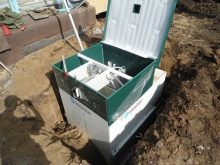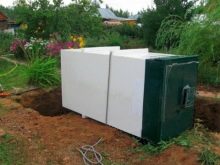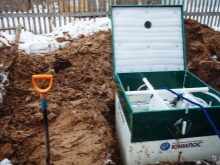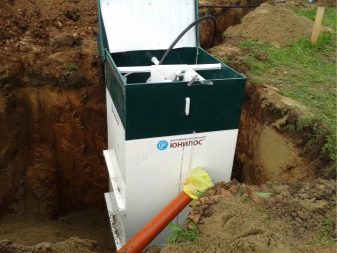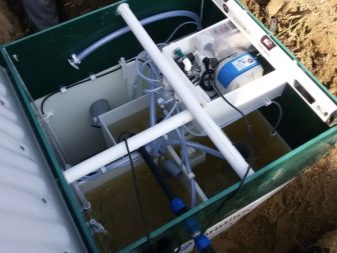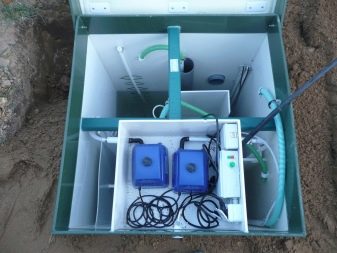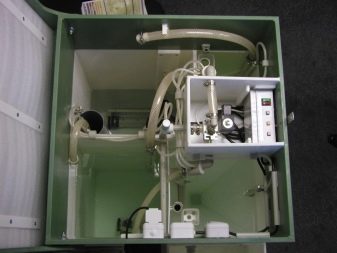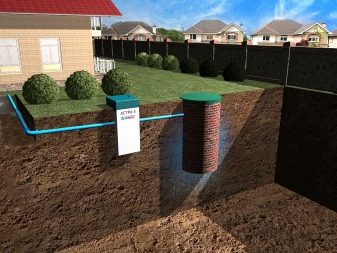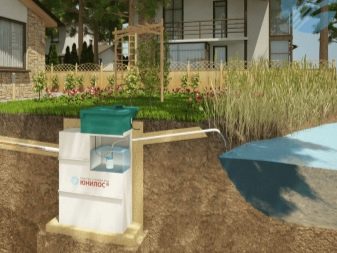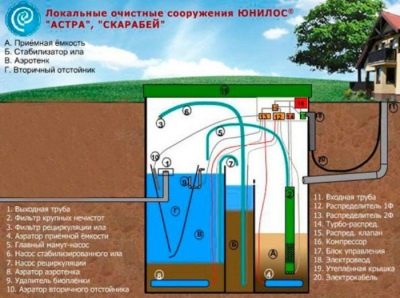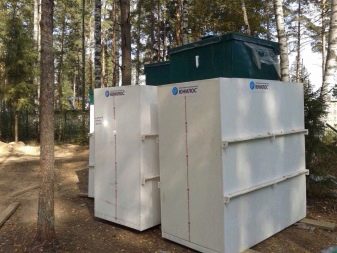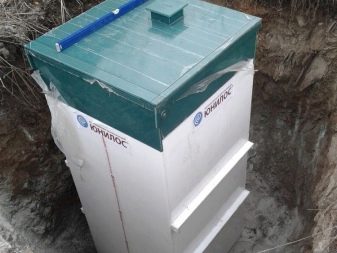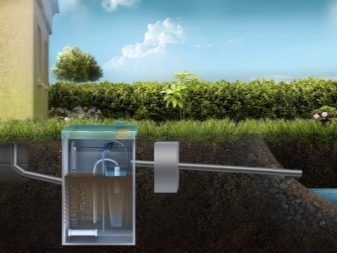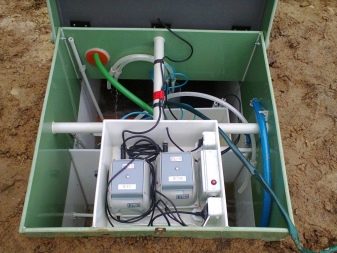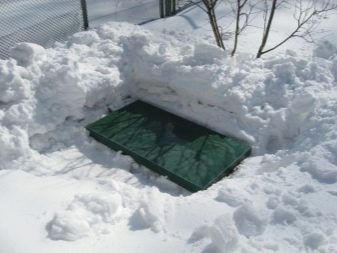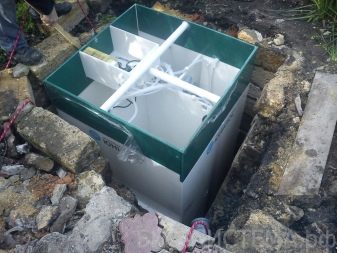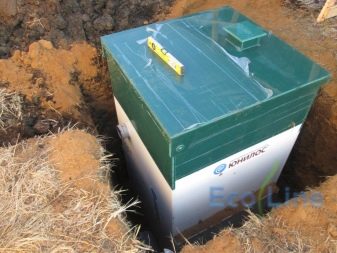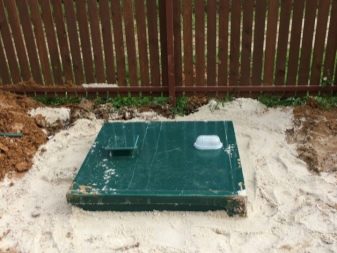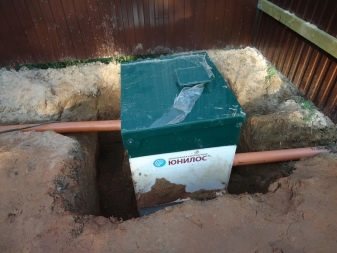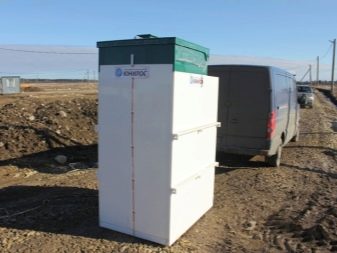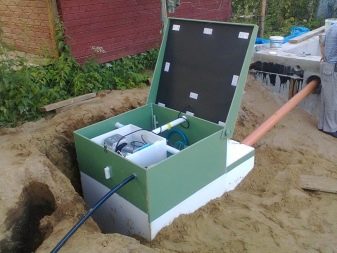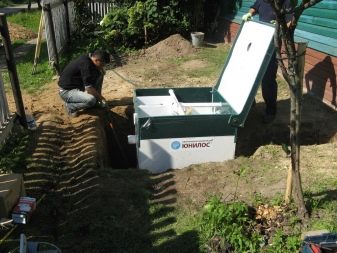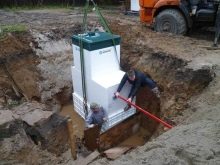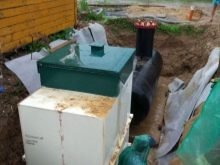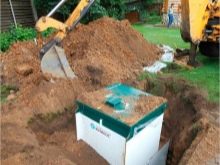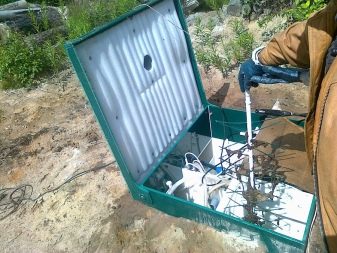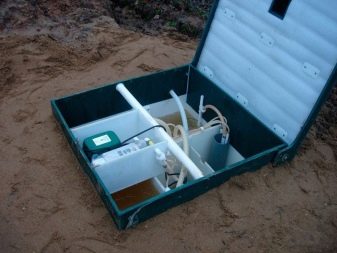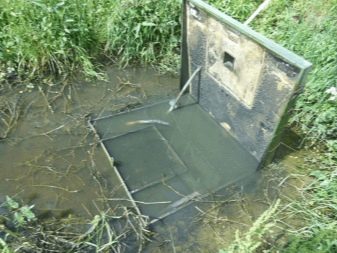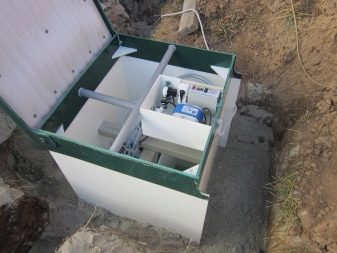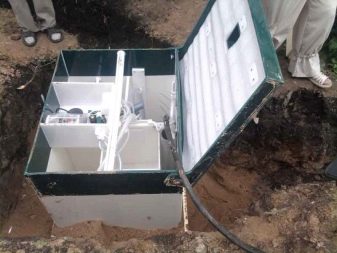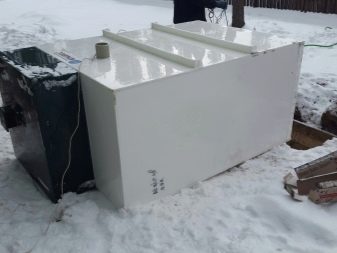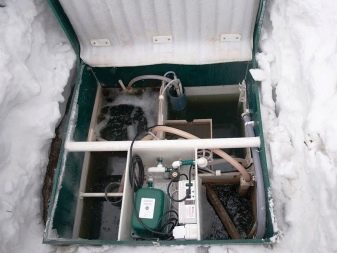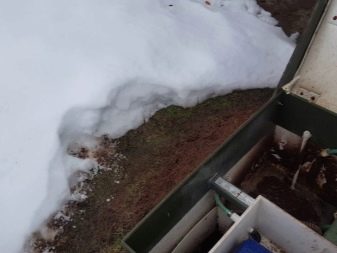Septic tanks "Astra": installation and operation

During the construction of country houses and cottages, an autonomous sewer system is often installed, because it is not always possible to connect to the central sewage system, it happens that financial opportunities do not allow it. The septic tank "Astra" belongs to such installation. This cleansing mechanism is a VOC (locally cleansing system), which operates by a method of deep biological sewage treatment. Let us consider in more detail the technical characteristics of the device.
Special features
For more than 10 years, the domestic company “SBM-group” has been engaged in the production of biological wastewater treatment structures under the general trademark “Septic Yunilos”.During that period of time elapsed since the release of the first Astra design, the system has undergone numerous modifications. As a result, increased productivity, efficiency and reliability of the mechanism.
The main differences between the septic tank "Astra" from similar devices are: system power and body strength. The uncontrolled septic tank "Yunilos Astra" effectively solves the problem of wastewater disposal.
Device and principle of operation
The body of the system is made of durable propylene, such building material does not corrode and is able to withstand heavy loads. The cleaning mechanism is located under the layers of soil and does not occupy a useful place on the site.
The installation of the cleaning station has a rectangular shape and is mounted so that the housing cover is located above the ground. Due to this arrangement, it becomes possible to access the working mechanisms, which facilitates the process of system maintenance.
The whole structure is placed inside the case, which ensures its compactness.
Technological welding makes the weld area completely sealed, eliminating leakage of effluent and the release of thermal energy.Purified wastewater from a septic tank can be discharged into the soil layers, because water purification is 95-98%.
The system of septic tank "Astra" has a ribbed surface, ensuring the reliability of the body. The internal space of the structure is divided into 4 chambers:
- acceptance chamber;
- aeration compartment;
- sludge collection chamber;
- secondary sedimentation tank.
For this type of septic tank are offered additional mechanisms that are purchased separately.
In order to protect wastewater not only by a biological method, but also as far as possible to carry out cleaning from harmful substances, an after-treatment unit is used. Such a system consists of several devices:
- pump for pumping fluid;
- mechanism for the destruction of harmful microorganisms and fungus by UV radiation;
- ultrasonic wastewater treatment unit;
- final filtering device.
If necessary, the cleaning mechanism "Astra" can be equipped with a KNS (built-in sewer station). This is necessary if the treated wastewater needs to be brought to another site located at a certain distance from the septic tank.
Septic tank "Astra" is equipped with only one hatch, but this is enough to carry out ongoing maintenance and pumping. Pumping is required 1 time in 6 months.
To understand how this type of septic system works, it is necessary to become familiar with the principle of operation of the mechanism.
- Reception chamber - This is the capacity to which the drains flow first. It performs the primary cleansing of the liquid from large residues that cannot be further processed. This purification takes place through a filter that is mounted with the pump. Also in the receiving compartment, the wastewater is enriched with oxygen due to the functioning of the aerator.
- Aeration compartment represents the most dimensional and functional capacity of the cleaning system. It mixes waste from the first chamber with activated sludge, which is a mixture of aerobic bacteria and nutrient medium. Microorganisms can function only with a constant supply of oxygen. For this purpose, designed aerator and compressors.
The system has a special mode switch.The signal from the float enters the control unit, resulting in a change in the modes of operation of the septic tank "Astra". If the fluid level in the device is not constant, then the float will always give signals about changing modes.
Advantages and disadvantages
Treatment facilities of the Astra model range have their own advantages in use.
- High levels of wastewater treatment. Without the use of additional post-treatment mechanisms (infiltration, filtration fields), the drains are cleaned by 95-98%. This station performance is determined by the use of jointly aerobic and anaerobic microorganisms.
- Automated cleaning process.
- Low consumption of electrical energy.
- No unpleasant odors. This allows you to mount the structure near the living quarters, baths, saunas. System workflows do not interfere with the homeowners' usual lifestyle.
- Long service life (about 50 years).
- The cleaning mechanism does not contain mechanized parts and assemblies.
- In the septic tank installed compressors of the Japanese manufacturer, which have high quality materials.
- Large range of models of cleaning mechanism. You can choose a model that meets the needs of any homeowner. There is an installation not only for small families, but also for large ones - with a population of 7-15 people.
- Attractive appearance. The cover of the construction has compact dimensions, as well as it is able to fit into the relief of the site. She stands only 15-20 centimeters above the ground.
- Working degrees are maintained inside the compressor, which allows the system to be used all year round. The main thing is to feed on microorganisms. In the absence of access to the electrical network, the bacteria do not die, and the purification process does not stop.
- Environmental Safety.
Despite the numerous positive aspects of the septic tank "Astra", there are also negative feedback from the owners about this mechanism.
- The functioning of the system depends on the electrical network.
- High installation cost.
- In winter, the design must be warmed.
- From time to time it will be necessary to purchase filters, aerators, pumps and other auxiliary kits for the sewer system. Each mechanism has its own lifetime, such information can be found in the equipment manual.
The lineup
Septic "Astra" has a fairly large range.The number indicating the type of model, at the same time, is an indicator of the number of residents for whose service this mechanism is designed.
"Astra 3"
The compact device is suitable for giving or a small dwelling. The productivity of the installation is 600 l / day, and the maximum discharge is 150 liters. Due to the small parameters of the station (1.12 x 0.82 x 2.03 meters) and a weight of 120 kg, it can be mounted independently.
"Astra 5"
The best option for a family living in a private country house is the use of the septic tank "Astra 5". System productivity - 1 m3, maximum discharge - 250 liters. Reliability and tightness of the design is due to the thickness of the shell walls (20 mm). When installing the device on clay soil, it is equipped with a pump for forced pumping of water. The presence of modifications allows the use of a septic tank when laying the discharge nozzles at a depth of one meter.
Installation Parameters:
- midi - 1.03 x 1.12 x 2.505 meters (depth 60-90 cm);
- Long - 1.16x1x3.03 m (depth 90-120 cm).
"Astra 8"
For the maintenance of a large number of residents, the Astra 8 septic tank is used, the capacity of the system is 1.6 m3. The design is made 3 variations:
- with normal installation of the supply line at a depth of 60 cm;
- for sites where the sewer system is located at the level of 90-120 cm;
- The device is recommended for construction, where sewage pipes are located at the level of 60-90 cm.
Maximum discharge - 350 liters. Dimensions: 1.5x1.16x2.36 m. When mounted in sandy soil, water is drained by gravity into a drainage well.
Installation
According to the rules, a septic tank should be located at a distance of at least 5 meters from the house and no more than 10 meters away, in which case it will be necessary to equip the cleaning mechanism with a manhole. This can increase financial costs as well as time and extra effort.
The control mechanism will need to be mounted in those places where the sewer pipes are located under a sharp turn. It is important to choose the method of disposal of domestic wastewater. They can be displayed in a filter well, ravine or ditch, which should be located outside your site.
Before installation, you need to determine the level of soil freezing. The inlet and outlet connections must be installed below this level.If this fails, then the pipeline must be insulated with thermal insulation materials. When the place for the installation is selected, you can proceed to installation.
- First, dig a pit, the parameters of which should take into account the height of the sand or concrete support, as well as the size of the septic tank. The gap between the walls of the pit and the outer walls of the treatment plant should be about 20 centimeters.
- Now they are starting to prepare the pit, at the bottom of which a sand cushion 20 centimeters thick is being filled. Sand cushion ram and level through the construction level. If the installation is carried out in soils with a high level of soil water, then concreting is additionally poured at the bottom of the pit, to which the installation will subsequently be fixed. If the soil layers are loose, then the inner walls of the pit are fixed by means of wooden formwork.
- If you do not want to drain the sewage into the layers of soil, and equip the collection of wastewater, you need to build a separate pit for the cumulative well. You can buy it in finished form at any hardware store or make it yourself.Concrete rings can be used for this purpose.
- In the wall of the cleaning mechanism holes are made for sewer pipes.
- A septic tank is placed on the bottom of the pit. For this purpose you will need 3-4 people. The tank is installed horizontally.
- A sewer pipe with a slope of 5 mm is laid in a trench previously dug, so that the drains flow into the mechanism by gravity. The trench width is generally 50 cm, and the depth should be such that the pipes are located below the level of soil freezing. Under the pipe, too, install a sand pillow with a thickness of 10 centimeters.
- Now you can begin to connect the septic tank to the sewer system and electrical network. When connected to the sewage system, it is enough to connect the primary compartment outlet to the pipeline of the external sewer system. It is better to entrust the connection of the mechanism to the power supply to professionals, because for this purpose it will be necessary to conduct a cable from the house to the septic tank.
- When the system is connected, you can check the functioning of the mechanism. A small amount of water is poured into the primary chamber, after which the mechanism is connected.After a few minutes of operation, the wastewater from the primary compartment enters the aeration tank.
- The first 24 hours of operation a mixture of aerobic microorganisms is poured into the sludge stabilizer of the cleaning mechanism. In the future, such an addition is not required, the system itself provides bacteria.
- Upon completion, you need to fill the station cover with earth.
The first 1-2 months the station will operate in its incomplete mode of performance. This is due to the fact that microorganisms are just starting their activity in the system, for their functioning it is necessary to receive wastewater, which is food for them.
How to use?
Consider what the instruction manual for sewage treatment plants looks like.
After the first start of the installation, the special maintenance of the mechanism will be required in a year. All system maintenance requirements are described in detail by the manufacturer on the equipment manual. During operation, a visual inspection of the state of the system will be necessary.
DIY service involves several steps.
- The resumption of colonies of microorganisms. This will increase the effectiveness of the aeration filter.
- Elimination of thick accumulated sludge, which in its composition does not contain chemicals and can be used as fertilizer. If the concentration of sludge exceeds 30 percent, then pumping out is necessary.
- Cleaning filters 1-2 times a year. Mechanisms are removed and washed with running water. But you also need to clean the walls from dirt.
- It is necessary to open the mechanism lid once a month to see how the system functions. If there are unpleasant smells, it means that an error was made during installation and connection.
It is forbidden to dump into the sewer system:
- construction garbage;
- petroleum products (diesel, gasoline, engine oil);
- medications;
- food waste (stubs from vegetables and fruits);
- detergents containing acids, alkalis, solvents, alcohol;
- a large number of disinfectants containing chlorine;
- hair in large quantities.
Allowed to flush:
- sewage from the toilet, you can flush with toilet paper;
- drains from the kitchen sink, bathroom, bath;
- washes from washing machines and dishwashers, the main thingso that detergents do not contain a large number of disinfectant solutions.
And also need to follow other rules for the use of a septic tank. Do not exceed the maximum amount of wastewater. Otherwise, the containers will overflow with liquid, which will spread throughout the site.
Septic uses electrical energy. In the case of power off, you need to try to spend as little as possible reserve. If this is not done, the design may fail.
Conservation for the winter
With seasonal use of the system, it is necessary to properly conserve (preparing for winter).
- Disconnect the cleaning mechanism from the electrical network.
- The fluid level should be at least 75%, if necessary, add.
- The sludge chamber is cleaned and thoroughly rinsed.
- The compressor is removed from the instrument compartment.
- Plastic bottles filled with sand are tied to the edge of the case. They are located as floats in each chamber, it prevents the formation of ice crust.
- The cover of the mechanism is covered with insulating building materials.
In the spring, it will be necessary to resume the cleaning process. All the above processes are performed in the reverse order:
- remove the insulating material from the system cover;
- install the compressor;
- get bottles filled with sand;
- launch the electrical equipment of the station;
- then you can use the design in normal mode.
With proper special maintenance and care, the cleaning mechanism “Astra” will serve you for a long time, giving comfort and reliability.
Having considered the main advantages and disadvantages of the “Yunilos Astra” cleaning mechanism, one can get a general idea of the sewage treatment plant. If to compare with foreign analogues, this station is the most profitable variation in the price-quality ratio.
About servicing autonomous sewage "Yunilos ASTRA 5", see the video.
